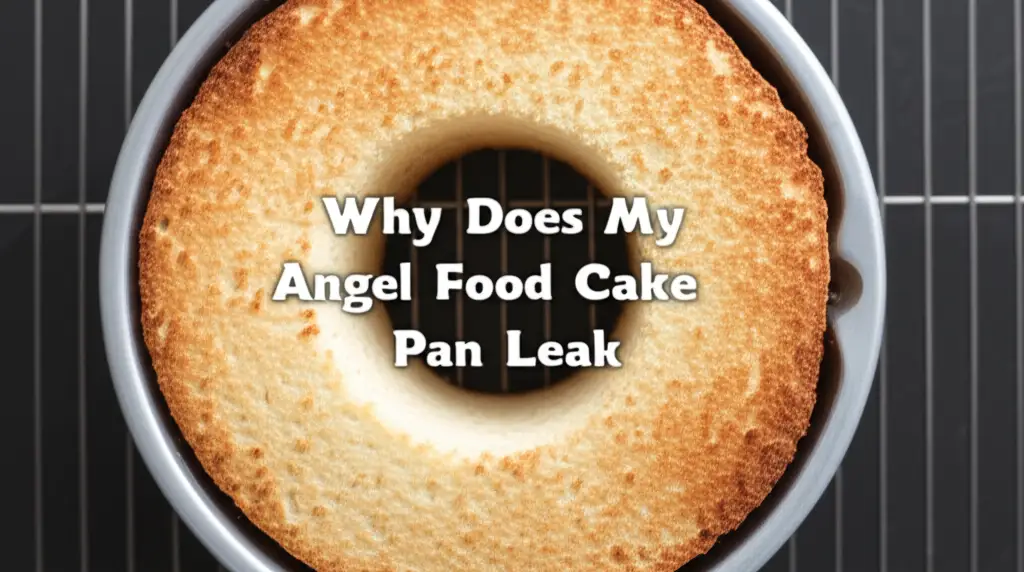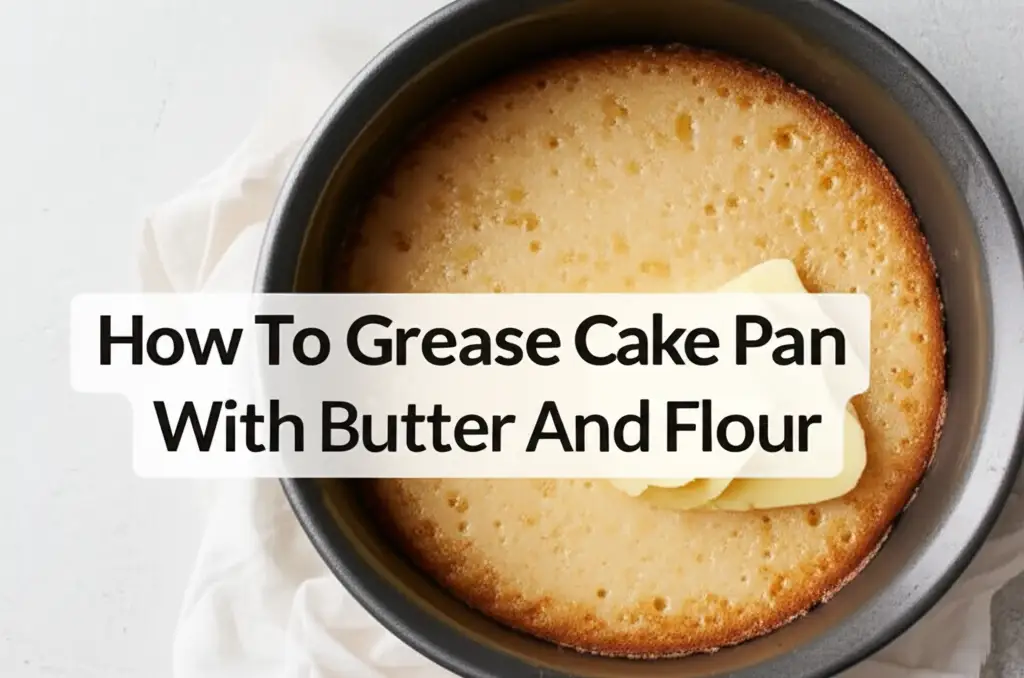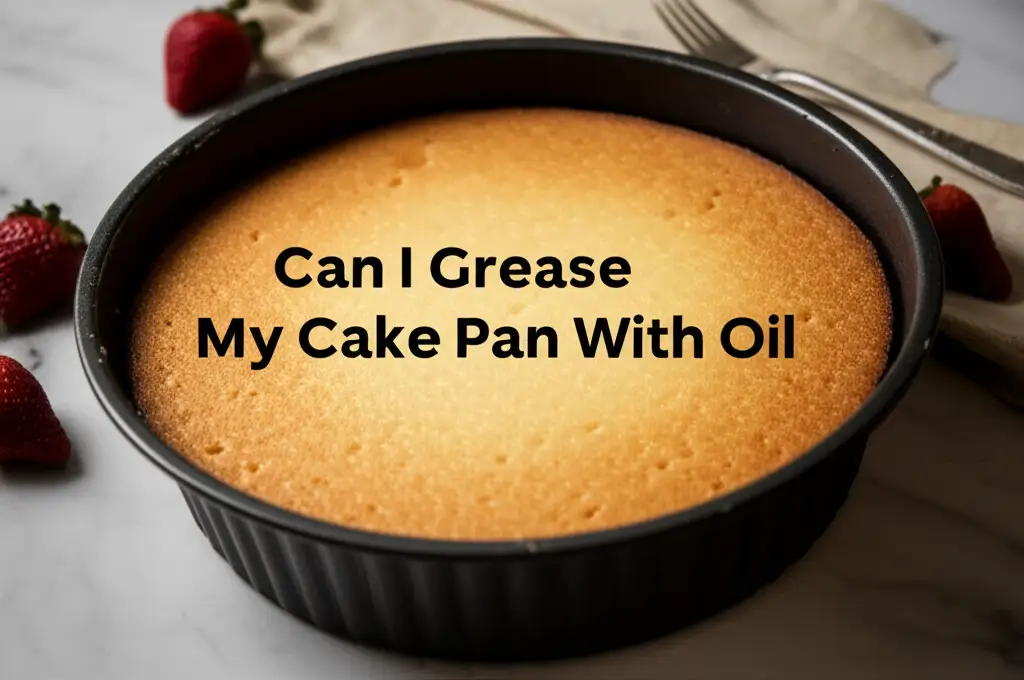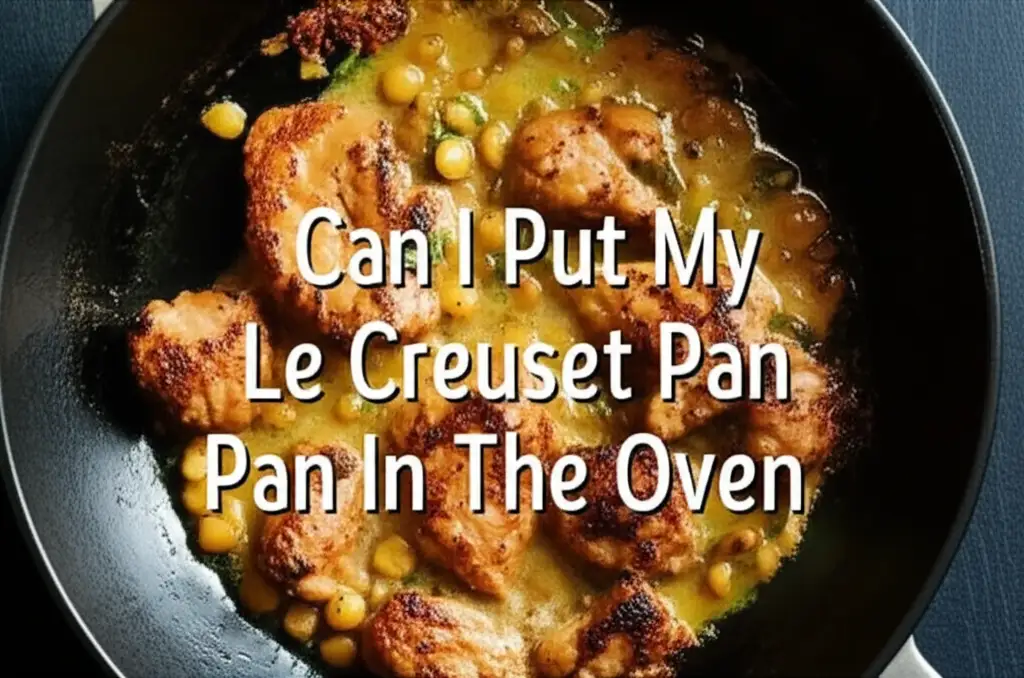· Katria Melrose · Baking Tips · 17 min read
Why Is My Baking Sheet Warping In The Oven
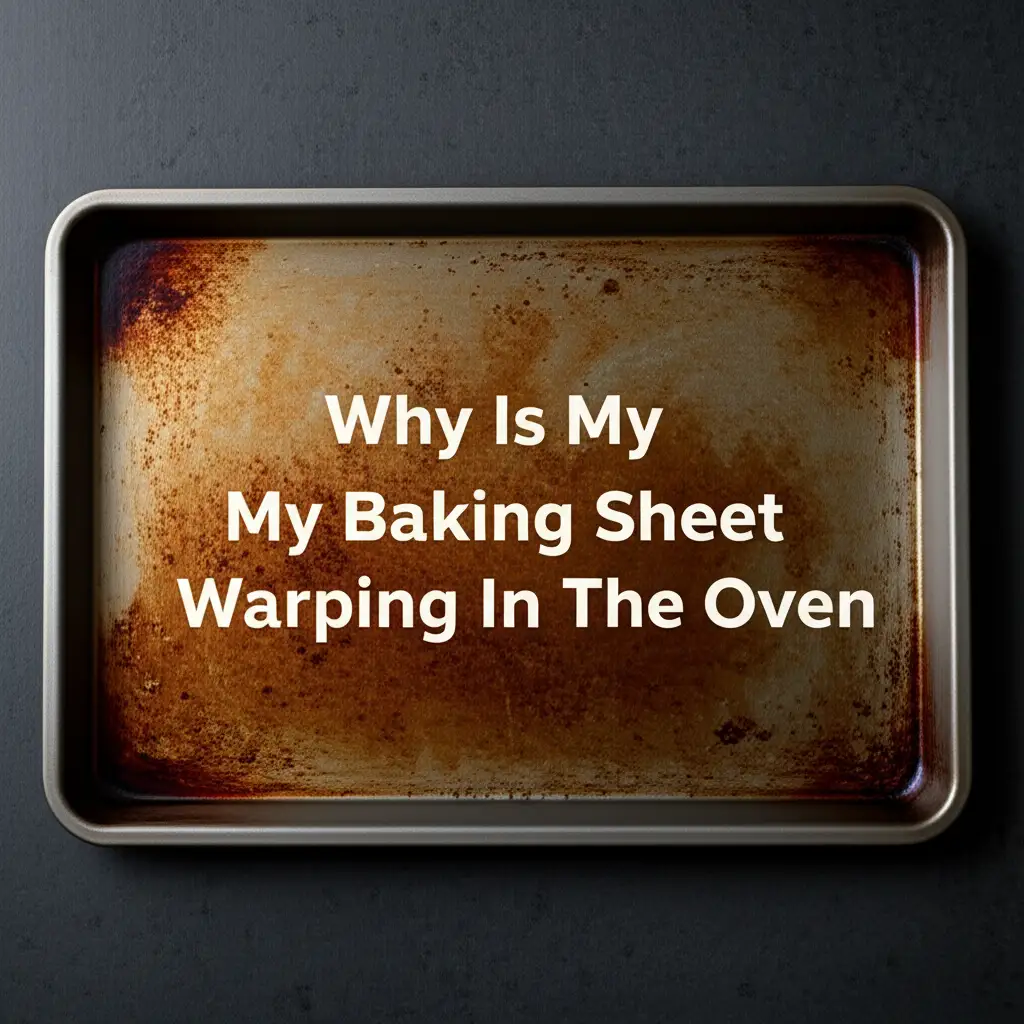
Understand Why Your Baking Sheet Warps in the Oven
Have you ever pulled a baking sheet from the oven, only to find it suddenly buckling and twisting? This can be quite startling. One moment, your pan is perfectly flat. The next, it sounds like a popping drum as it contorts into an uneven shape. It disrupts your cooking. It also makes you wonder if your pan is ruined. I know this frustration well.
Many home bakers experience this common problem. A baking sheet warping issue seems to come out of nowhere. It happens to new pans and old ones alike. This article will explain the science behind why this happens. We will look at factors like metal type and oven temperature. We will also explore practical ways to prevent your baking sheets from warping. By the end, you will understand how to keep your pans flat and your baking even.
Takeaway: Keeping Your Pans Flat
- Choose thick, heavy-gauge baking sheets.
- Preheat your oven and sheet together gradually.
- Avoid sudden temperature changes for hot pans.
- Clean your baking sheets gently, away from extreme heat.
- Store pans properly to prevent physical damage.
Why does my baking sheet warp in the oven? Your baking sheet warps due to sudden temperature changes, causing rapid, uneven expansion and contraction of the metal. This thermal stress, combined with the pan’s material and thickness, forces it to buckle and distort.
The Science Behind Metal Warping: Thermal Expansion and Contraction
When you put a baking sheet into a hot oven, you introduce it to a significant temperature change. Metals expand when they get hot. They contract when they cool down. This process is called thermal expansion and contraction. It is a fundamental property of all materials.
Baking sheets are usually made of metal. These metals respond quickly to heat. When one part of the pan heats up faster than another, it expands more rapidly. This creates internal stress. Imagine pulling on one corner of a blanket while the other corners stay still. The blanket will wrinkle. Similarly, the pan’s structure cannot handle the uneven forces. This leads to the familiar buckling noise and visual distortion.
Uneven Heating is Key
A baking sheet does not heat evenly all at once. The bottom side, facing the hot oven rack, heats first. The top surface, exposed to cooler air and food, heats slower. Edges and corners also heat differently than the center. This creates different expansion rates across the pan. These varying expansion rates pull the pan in different directions. The metal gives way, resulting in a warp. The stronger the temperature difference, the more severe the warp can be.
The design of the pan also plays a role. Pans with thin spots or weak points are more vulnerable. Pans that already have small dents or imperfections can warp more easily too. The metal tries to find a new, stable shape to relieve the stress. This new shape is often bent or twisted. Understanding this basic science helps us see why some pans warp. It also helps us think about how to stop it.
Material Matters: Aluminum vs. Steel
The type of metal your baking sheet is made from significantly affects its tendency to warp. Different metals react to heat in different ways. Understanding these differences can help you choose a better pan. Most baking sheets are made from aluminum or steel. Each has distinct properties.
Aluminum is a very popular material for baking sheets. It conducts heat exceptionally well. This means heat spreads quickly across an aluminum pan. Good heat conduction helps achieve even baking. However, aluminum also expands and contracts more than steel when heated and cooled. This makes it more susceptible to warping under rapid temperature changes. Thinner aluminum pans are especially prone to this. When you hear that loud pop, it is often a thin aluminum pan adjusting to the heat.
Steel, including stainless steel and aluminized steel, behaves differently. Stainless steel is known for its durability and resistance to corrosion. It does not conduct heat as well as aluminum. This means it heats up slower. It also expands and contracts less dramatically with temperature changes. This makes stainless steel pans more resistant to warping. Aluminized steel combines properties of both metals. It has a steel core for strength and warp resistance. It has an aluminum coating for better heat conduction. This combination makes aluminized steel a popular choice for professional bakers. They need reliable, warp-resistant pans.
Choosing a thicker gauge metal, regardless of type, helps too. Thicker materials offer more structural integrity. They resist the forces of expansion and contraction better. They also distribute heat more evenly across their surface. This reduces the drastic temperature differences that cause warping. Your choice of material directly impacts your pan’s long-term flatness.
The Role of Pan Thickness and Construction
Beyond the metal type, a baking sheet’s thickness and how it is built are crucial for preventing warping. Think of a flimsy piece of paper versus a sturdy cardboard box. The paper bends easily. The box holds its shape. Baking sheets follow a similar principle.
Thicker pans are inherently more resistant to warping. Manufacturers measure pan thickness using a gauge system. A lower gauge number means a thicker metal. For example, a 10-gauge pan is much thicker and sturdier than a 22-gauge pan. Heavy-gauge pans have more material. This extra material provides greater structural integrity. It helps the pan withstand the internal stresses caused by heating and cooling. Thicker pans absorb and distribute heat more uniformly. This minimizes those sudden, uneven temperature differences across the surface. These differences are the primary cause of warping.
Reinforced Edges and Design
Many quality baking sheets feature reinforced edges. These edges are often rolled or crimped. Sometimes, a wire rod runs through the rim. This design adds significant strength to the pan. It creates a rigid frame that resists bending and twisting. Imagine a picture frame; the frame makes the thin picture stable. Similarly, these reinforced edges provide stability for the pan’s flat surface. Without them, a thin, flat sheet of metal is more likely to flex and buckle.
Some pans also have textured surfaces or subtle ridges. These designs are not just for non-stick properties. They also add strength to the pan. They break up the flat surface. This makes it harder for the metal to bend uniformly. Pans with these features often maintain their shape better over time. When you are buying a new baking sheet, check its weight and construction. A pan that feels solid and has robust edges is a good indicator of warp resistance. These design elements are key to a long-lasting, flat baking sheet.
Sudden Temperature Changes: The Enemy of Flat Pans
Sudden temperature changes are perhaps the biggest culprit behind baking sheet warping. This phenomenon is known as thermal shock. It puts immense stress on the metal. Imagine going from a warm room to freezing cold instantly. Your body would react strongly. Metals react similarly, but with physical distortion.
When you place a cold baking sheet directly into a very hot oven, thermal shock occurs. The pan’s bottom surface, which touches the hot air or oven rack, heats up extremely fast. The top surface, and the interior of the metal, warm up much slower. This creates a huge temperature difference within the pan itself. The rapidly expanding bottom surface pulls and pushes against the cooler, more rigid top. The metal has to relieve this stress. It does so by buckling and popping. This is the sound of your pan protesting the sudden change.
Even worse is cooling a hot pan too quickly. For example, some people run a hot baking sheet under cold water immediately after removing it from the oven. This is a sure way to warp it. The metal that was intensely hot suddenly gets hit with cold. The outer layers contract very rapidly. The inner layers remain hot for a moment longer. This causes a reverse stress reaction. The pan snaps back, often with more force. This can cause permanent warps.
To prevent thermal shock, treat your pans with care. Let cold pans come to room temperature before putting them into a hot oven, if time allows. More importantly, allow hot pans to cool down gradually on a wire rack. Never plunge a hot pan into cold water. This simple habit can greatly extend the life and flatness of your baking sheets. This careful approach prevents the damaging effects of sudden temperature shifts.
Uneven Oven Heat: A Hidden Culprit
Your oven’s internal temperature distribution can also contribute to baking sheet warping. We often assume ovens heat perfectly evenly. In reality, most ovens have hot spots and cooler zones. This uneven heating can stress your baking sheets.
Ovens often have heating elements at the bottom, top, or both. These elements radiate heat directly. Air currents inside the oven then distribute this heat. However, this distribution is rarely perfect. Some areas inside your oven might consistently be a few degrees hotter or colder. When you place a baking sheet in such an oven, parts of the pan might heat up faster than others. This creates localized temperature differences on the pan’s surface.
Imagine your baking sheet sitting partly over a hot spot. That section of the pan expands more rapidly than the parts in cooler zones. This uneven expansion leads to internal stress within the metal. The pan attempts to equalize this stress by bending or buckling. This can make the pan warp over time. Even if it does not warp immediately, repeated exposure to uneven heat can weaken the pan’s structure. This makes it more prone to warping later.
Convection ovens use a fan to circulate hot air. This generally leads to more even heating. Pans used in convection ovens might experience less thermal stress from uneven heat directly. However, convection ovens also heat items faster. This means the overall temperature change for the pan is more rapid. It still poses a risk of warping due to quick heating. Regardless of oven type, understanding that your oven itself might not heat perfectly helps. It encourages practices like preheating your oven thoroughly. It also highlights the importance of choosing a sturdy baking sheet to begin with.
Darker Pans and Heat Absorption
The color and finish of your baking sheet also influence its tendency to warp. It might seem like a small detail, but it makes a significant difference in how the pan absorbs and distributes heat. Darker pans generally absorb more heat than lighter, shiny ones.
A dark-colored surface absorbs more radiant heat energy. Think of wearing a black shirt on a sunny day. You feel hotter than if you wore a white shirt. The same principle applies to baking sheets. Dark pans, especially those with non-stick coatings, absorb more heat from the oven’s elements. This causes them to heat up faster. Faster heating means the pan experiences a more rapid temperature change. This increases the risk of thermal shock and warping.
Lighter, shiny aluminum pans reflect more radiant heat. They absorb less. This means they heat up more gradually. The heat distributes more evenly across the pan’s surface. This reduces the risk of sudden, uneven expansion and contraction. Consequently, shiny, lighter-colored pans tend to be less prone to warping than their darker counterparts. They also offer more forgiving baking. They prevent over-browning on the bottom of baked goods.
Some dark pans are specifically designed to be heavy-gauge and warp-resistant. They counteract the increased heat absorption with superior construction. However, if you have a thin, dark non-stick pan, it is more likely to buckle. When purchasing a new baking sheet, consider the finish. If you opt for a dark pan, make sure it is of very high quality. It needs to be a heavy-gauge material with robust construction. This helps mitigate the increased risk of warping from faster heat absorption.
Age, Wear, and Tear on Your Baking Sheets
Baking sheets do not last forever. Over time, repeated use and exposure to high temperatures can take a toll. This leads to wear and tear. An older pan might start to warp more easily, even if it was once perfectly flat.
Every time a baking sheet goes into a hot oven and then cools down, the metal expands and contracts. This creates stress on the material. Imagine bending a paperclip back and forth repeatedly. Eventually, it will break. Metals in baking sheets are more durable than paperclips. However, they still experience fatigue from these thermal cycles. Over hundreds of uses, the internal structure of the metal weakens. Small, microscopic cracks can form. These invisible stresses make the pan more susceptible to warping. The metal loses some of its original strength and elasticity.
Dents, scratches, and dings also weaken a baking sheet. If you drop a pan or scrape it with metal utensils, you create weak points. These imperfections can act as starting points for warping. When the pan heats up, the stress might concentrate at these damaged areas. This causes the pan to buckle or twist at that specific spot. A pan that was once rigid might become springy or prone to flexing.
Proper care can extend a pan’s life, but eventual wear is inevitable. If your baking sheets are showing signs of age, such as permanent warps, excessive discoloration, or a general flimsy feel, it might be time for a replacement. Regularly cleaning your baking sheets helps maintain their surface and can prevent the buildup of burnt residue. This residue can also contribute to uneven heating. To learn more about proper cleaning, you can read our guide on how to clean baking sheets or our tips on how to clean sheet pan. Keeping them clean and free of damage helps them perform better for longer.
Preventing Warping: Smart Habits for Your Pans
Preventing your baking sheets from warping involves simple, smart habits. These practices focus on minimizing thermal shock and ensuring even heat distribution. Implementing them will help your pans stay flat for years.
First, always preheat your oven thoroughly. Do not place a cold baking sheet into a cold oven and then turn it on. Instead, let your oven reach the target temperature completely before adding your pan. For best results, you can even put the empty baking sheet into the oven during the last few minutes of preheating. This allows the pan to warm up gradually with the oven. It reduces the shock when it finally reaches baking temperature. This gentle transition helps the metal expand slowly and evenly.
Second, avoid drastic temperature changes once the pan is hot. When you remove a hot baking sheet from the oven, place it on a wire cooling rack. Allow it to cool down naturally at room temperature. Never run cold water over a hot pan. This is a common mistake that almost guarantees warping. The sudden cold shock can cause immediate and severe distortion. Let the pan cool until it is just warm or at room temperature before washing it.
Proper Cleaning and Storage
Proper cleaning also plays a role in preventing warping. Burnt-on food or residue can create uneven insulation on the pan’s surface. This can lead to hot spots. Clean your baking sheets regularly and thoroughly. Avoid harsh abrasives that can scratch the surface. Such scratches create weak points. For stubborn stains, try soaking the pan first. You can also explore methods like those described in our article on how to clean baking sheet with baking soda and vinegar. This helps maintain the pan’s integrity.
Finally, store your baking sheets properly. Avoid stacking them haphazardly with heavy items on top. This can cause dents or bends over time. These physical damages create weak points. Store them flat or vertically in a pan organizer. Good storage protects them from physical stress. These simple habits create a happier, flatter baking sheet.
Choosing the Right Pan for Warp-Free Baking
Selecting the right baking sheet from the start is your best defense against warping. The market offers many options. Knowing what to look for will save you frustration later. Focus on material, thickness, and construction features.
Look for baking sheets made from heavy-gauge aluminum or aluminized steel. These materials offer the best balance of heat conductivity and warp resistance. Avoid very thin, lightweight pans. These are often inexpensive. However, they are highly prone to warping under heat. A good rule of thumb: if a pan feels light and flimsy, it will likely warp. Opt for pans that feel substantial and heavy in your hands. This indicates a thicker gauge metal.
Examine the pan’s edges. Quality baking sheets often have rolled edges or reinforced rims. Some even have a steel rod embedded in the rim. These features add significant strength and rigidity to the pan. They act like a frame, preventing the flat surface from buckling. Pans with simple, thin folded edges are generally weaker. They will warp more easily.
Consider the finish. As discussed, lighter-colored, shiny pans reflect heat better. They heat up more gradually and evenly. This reduces the risk of thermal shock. If you prefer a darker, non-stick finish, ensure the pan is exceptionally heavy-duty. The added thickness helps offset the increased heat absorption. Some professional-grade pans also feature textured surfaces. These textures help distribute heat and add rigidity. Brands known for quality cookware often produce warp-resistant sheets. Reading reviews can also guide your choice. Investing in a good quality pan upfront pays off. It gives you years of flat, reliable baking performance.
Frequently Asked Questions
Can you fix a warped baking sheet?
It is difficult to fix a severely warped baking sheet permanently. Minor warps might sometimes flatten out as the pan cools completely. However, once the metal has been stressed and buckled, its structure changes. Attempting to bend it back by force can further weaken it. This may cause new weak points. It is usually better to prevent warping than to try to fix it.
Does preheating prevent warping?
Yes, preheating can help prevent warping. Placing a cold baking sheet into a thoroughly preheated oven allows the pan to warm up more gradually. This reduces the sudden thermal shock that causes rapid, uneven expansion. Some bakers even place the empty sheet in the oven for a few minutes of preheating before adding food.
Are dark baking sheets more likely to warp?
Dark baking sheets absorb more radiant heat than lighter, shiny ones. This can cause them to heat up faster and more intensely. This rapid heating increases the risk of thermal shock and warping, especially if the pan is thin. Thicker, high-quality dark pans are designed to better withstand this extra heat.
What type of baking sheet is best for avoiding warping?
Heavy-gauge aluminized steel or thick aluminum baking sheets with reinforced edges are best for avoiding warping. These materials offer a good balance of heat distribution and structural integrity. Look for pans with lower gauge numbers, which indicate thicker metal. Avoid thin, lightweight pans.
Is it safe to use a warped baking sheet?
Using a warped baking sheet is generally safe. It does not pose a health risk. However, it can affect your baking results. A warped pan will not sit flat in the oven. This can lead to uneven cooking, burning in some spots, and undercooking in others. Food might also slide off the uneven surface.
Conclusion
The mystery of a baking sheet warping in the oven is now clear. It is a predictable response to basic metal science. Uneven heating, sudden temperature changes, and the pan’s material and thickness are the main culprits. Your pan buckles to relieve internal stress. It is not failing you personally. It is simply reacting to physics.
Now you understand why this happens. You can take steps to prevent it. Choose heavy-gauge, well-constructed pans. Always preheat your oven and your pan gradually. Allow hot pans to cool slowly on a wire rack. Never shock a hot pan with cold water. These simple practices will greatly extend the life and performance of your baking sheets. They will keep your pans flat and your baked goods evenly cooked. Embrace these tips. Enjoy perfectly flat, reliable baking sheets for years to come. Your delicious creations will thank you.


